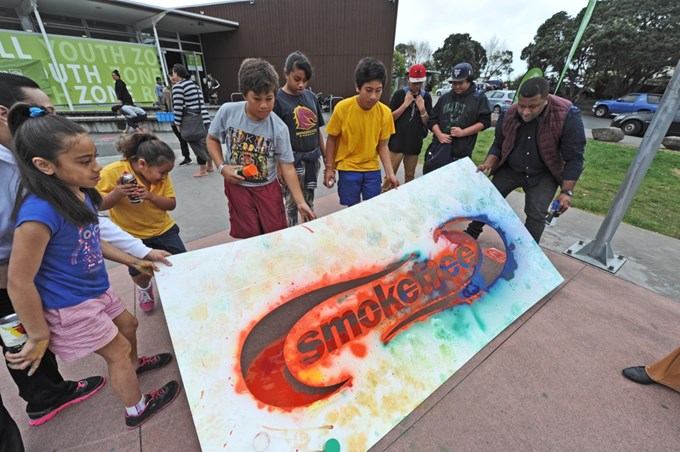Smoking kills more people in our country each year than road crashes, alcohol, other drugs, suicide, murder, drowning and earthquakes combined.
New Zealand’s goal is to be smokefree by 2025, and Auckland Council is committed to achieving this across the region; as outlined in the Smokefree Policy and Implementation Plan approved in 2017.
However, smokefree initiatives have been far less effective for Auckland’s high priority groups, so a new, evidence-based, targeted approach is needed.
This week, to continue delivery of this Implementation Plan, the Environment and Community Committee approved an action plan to do just this; ‘Auahi kore hapori whānui – action for smokefree communities’.
Auckland’s high prevalence smoking cohorts are Māori women and Pacific males (aged 22 – 45); Maori and Pacific make up 40 per cent of smokers in Auckland.
We also know from research that the areas where most of these smokers live are Mangere, Otahuhu, Manurewa, Otara, Papatoetoe, Papakura, Henderson-Massey, Glen Innes and Point England.
“This is a fresh, innovative approach to increase our impact and target our funding and efforts towards the groups that we know are still smoking and need our backing to quit,” says Environment and Community Committee Chair Penny Hulse.
“Creating smokefree communities isn’t just about what we do, but also how we do it; that’s why this approach has been created alongside the groups that it seeks to support. They’ve told us we won’t succeed if we don’t customise our approach, and we’ve listened.
“So we’re making it fun, engaging, whanau based and without judgement, so smokers can take strength from those around them to quit smoking.”
The action plan is made up of three activity streams:
- by the people, for the people: Enable community-led projects to build smokefree communities and awareness of smokefree goals. Establish a regional community grants fund to enable grass roots community-led smokefree projects.
- activate smokefree public places: and smokefree movement in priority communities – examples of this include celebrating local success stories, fun interactive events to share ideas, stop smoking competitions and celebrity promotions, instigation of smokefree conversations by local influencers, bespoke or interactive smokefree infrastructure in smoking hotspots
- switch to quit: create more supportive environments for smokers in a harm reduction approach for smokers who want to quit. This will be achieved by sharing evidence, busting myths and celebrating ‘switch to quit’ stories. This program is not about promoting vaping as a consumer product for non-smokers, but recognising that vaping is a legitimate tool to help established smokers quit.
When and how?
The action plan will be implemented over three years, and initiatives will be tested in one or two locations and adapted for other areas if successful.
The Long-term Plan allocated funding of $2 million over three years to progress the goal of ‘Smokefree Auckland by 2025’.
Of the $2 million allocated, $1,100,000 is for delivery of ‘Auahi kore hapori whānui –action for smokefree communities’. The remaining $900,000 will action the Smokefree Policy Implementation Plan 2017.
Auckland’s high prevalence smokers:
- 40% of those who smoke in Auckland are Māori and Pacific.
- High prevalence cohorts are Māori women and Pacific males (aged 22 – 45)
- 27,768 Māori smokers
- 23,712 Pacific smokers
- To reach our smokefree 2025 goal, 3500 Māori and 2600 Pacific people would need to stop smoking each year over the next seven years.
Read the full report and action plan here (item 8)


